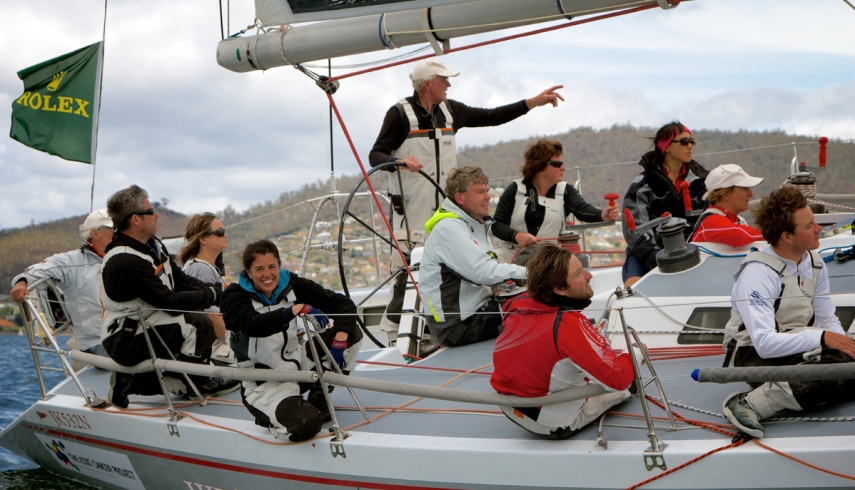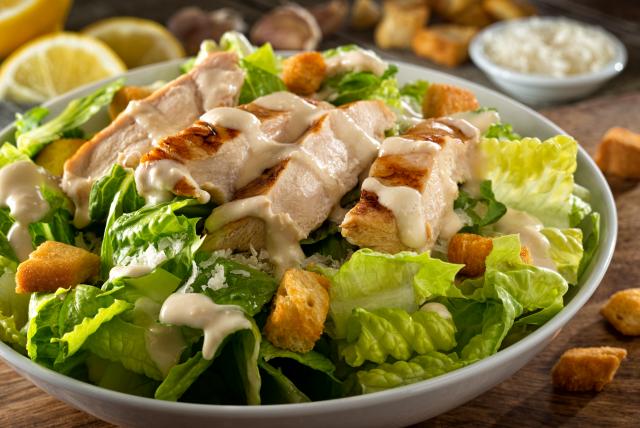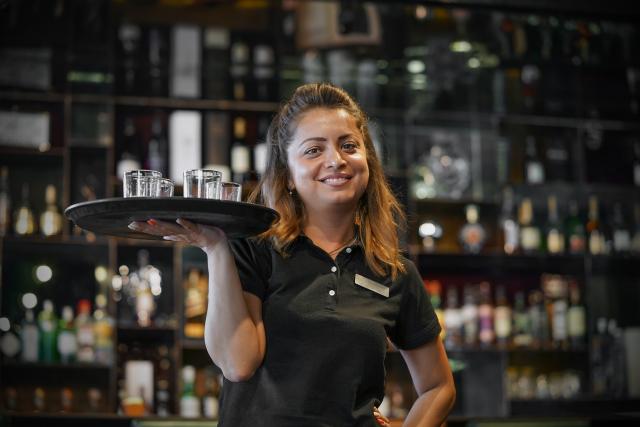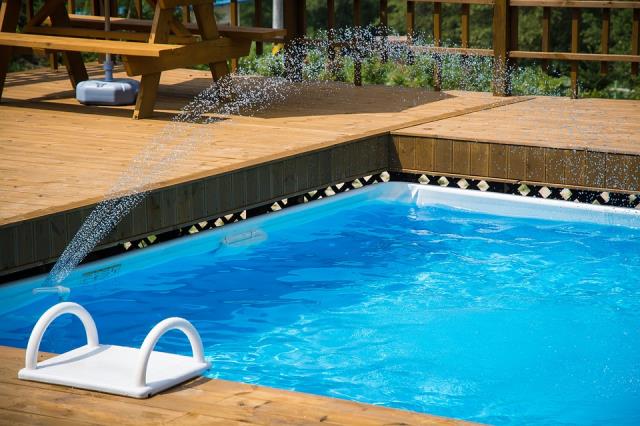We’re gliding along the water, in the heart of Hobsons Bay, on a sun-kissed Tuesday afternoon. It’s pleasant viewing as a fly on the wall with no task to perform other than adding dead weight to balance the boat.
Beyond the ripples of blue you can see the majestic city skyline to the right. On the left and high above is the West Gate Bridge, rows of colourful cars crawling along its lanes.
The boat’s owner and skipper Kathy McFarlane is at the helm and is wearing her game face.
She’s joined by regular crew members Mandy Murray and Cathy Carracher, and partner Serge, who was talked into coming along for the ride.
McFarlane is alert and composed as she bellows out a chain of sailing terminology unknown to me but clearly ingrained in her crew.
Conditions are blowy and at 22 knots, nothing to be sneezed at. Tacking – turning from one side of the wind to the other – sees the crew spark to life.
There’s a couple of minor complications but for the most part, everything runs smoothly.
McFarlane steers the boat and breaks into a broad smile. This is her playground.
Her fascination with the water had been explained to me much earlier, on dry land.
“I grew up learning to sail down at McCrae on the Mornington Peninsula.
My grandfather had a boatshed on the beach there and my family had dinghies.
So my earliest memories, probably before I could walk, are of being on a boat on the water,” McFarlane says.
She and her older brother started out in a Heron dinghy, an old, robust wooden boat designed for a crew of two and ideal for first-timers.
Not long after that her brother spotted boats racing at the yacht club and wanted in on the action.
Their father decided the Heron wasn’t going to cut it, so the pair were soon in a Flying Ant, another iconic junior boat which McFarlane says had “the works”.
“It’s a really good little training boat for kids.” The pair were part of the Victorian youth sailing squad at the time and slowly progressed to bigger and more intricate boats through their teens before parting ways and going it alone.
For McFarlane, that entailed moving overseas, living in Europe and starting a family.
Sailing took a back seat until she moved back to Australia several years ago.
She bought herself a one-man Laser dinghy and reconnected with her childhood passion before progressing to crewing on keelboats. Then she bought her first boat.
At the Royal Yacht Club of Victoria, McFarlane’s boat sits moored among lines of other boats in the marina, gently swaying from side to side.
“I’ve had this boat six months,” the West Footscray resident says. “It’s one of those scary challenges that you set yourself and you gulp and think, should I really be doing this? And you just close your eyes and do it anyway.”
The 22-year-old 10.5 metre keelboat, named 2×2 because McFarlane and her partner have both been married twice, set her back about 50-large. It’s McFarlane’s pride and joy.
“It kind of consumes everything and if you’re gonna spend that sort of money on a boat you want to get out and use it … you’re not gonna have it to go out once in a blue moon,” she says.
McFarlane races up to three times a week. There’s twilight racing after work on Wednesday; an intra-club regatta on Saturday; and social events on Sunday.
“There won’t be any boats exactly like this one but it will be a division of boats of a similar size,” she says. “I guess for me it gives you a reason to learn and improve as well as to get a team together and build skills. I just love being on the water. Even if I wasn’t racing I’d still love being on the water. But racing gives you a reason to get out there.”
McFarlane and her crew are competing in a new series titled the Port Phillip Women’s Championships, a concept geared at promoting women in sailing.
“One of my aims with buying the boat was to be able to introduce more women to sailing. For me it’s been a real confidence-building activity throughout my life which has seen me through some pretty tough times,’’ McFarlane says.
‘‘I just wanted to give some other women that opportunity.” The brainchild of Yachting Victoria’s newly formed women and girls in sailing committee, the five-race series will run on Sundays until May and combines existing Lady Skippers races from each of the keelboat clubs around the bay.
Moonee Ponds resident Monica Tonner is the committee chairman and has been a member of the Sandringham Yacht Club for five years where she co-ordinates races.
Like McFarlane, Tonner learned to sail in her childhood, but only recaptured the urge in her 30s.
For the past two years, she’s taken part in the Sydney to Hobart race aboard Wild Rose, owned by one of Australia’s most experienced offshore yachtsmen, Roger Hickman.
Last year the boat won its division with a crew of six men and six women.
“Being an iconic race and being out there amongst the fl eet …
it’s adrenalin-pumping,” Tonner recalls vividly.
“There’s nothing to prove because they respect us [women] for who we are.
Physically you may not compare but you endure the same mentally.” So why the need for an all-women’s series? Tonner says the committee identified a need to promote more female participation in the sport and hatched the series in a bid to merge all the races that are held around the bay under the one umbrella.
The big hook is encouraging women to step up to helming and to increase the levels of boat ownership among women sailors.
“We believe that even though there were women’s events it needed to be conglomerated and embraced,” Tonner says. “Until you give it support and it is embraced …
it can’t grow.”
Williamstown resident Tanya Stanford jumped on board the concept. Stanford comes from a boating background, her uncle is one of the largest commercial and pleasure boat manufacturers in the country.
She grew up in Pittwater, on Sydney’s northern beaches, and was soon sailing with friends.
“I skipped the dinghy,” she laughs. “That was too much hard work.
I didn’t like the tipping-over bit.” Stanford sailed for much of her life thereafter, even fitting in a three-year odyssey from Australia to Sweden in the late ’80s.
But it was only ever a hobby.
In 2005 however, she helped create the women-in-sailing competition, which the Sandringham Yacht Club now runs, and started racing.
She’s won several trophies along the way.
In 2005 she was the first woman to compete in the Royal Yacht Club of Victoria’s singlehanded race.
In 2008 and 2010 she took out the Australian Women’s Keelboat Regatta, a first for her home club.
Stanford believes this new series will encourage more women to make the step to boat ownership. She bought her boat, Nouannie, in 2009.
“I was the first woman at this club to buy her own keelboat,” she says. “It’s really backward when you think about it. For me it’s about giving back to the crew.
‘‘Even though I own the boat, any of the girls can take it up the river and they can enter any races. I think it’s fantastic, giving women who don’t own boats an opportunity to helm in a race.”
McFarlane says if she had been asked about the need for an all-women’s series before venturing into keelboat sailing she would have questioned it.
“But when you step onto keelboats, everything’s bigger,” she says. “Some would argue that there’s more strength needed to do things. And it’s a traditionally male dominated sport. I realised that, actually, there are very few women sailors on keelboats. If you go out on a boat with a bunch of blokes they tend to do everything.”
For now, McFarlane says she’s taking it slow and steady. “As a skipper I’m pretty lousy, as our record indicates,” she says tongue in cheek.
“But I guess for me my goals aren’t necessarily to win races at the moment. Although that would be great, my main goal is that everybody enjoys the experience. I’m still learning to sail this boat effectively myself. I’m relatively new to helming.
‘‘I’ve always crewed in the past. I’m a newbie skipper. One of the biggest challenges for any boat owner, apart from the financial outlay, is just attracting and maintaining a crew.”
Stanford, a senior sailing instructor for Yachting Australia, believes the divide between men and women is all in the mind and that women can make the grade at the helm.
“Some boats you need strength and that’s where the men come into it. But then, women can work smarter to get around that strength issue. There’s a way of simplifying everything as far as I’m concerned.”
While Stanford says this series is all about fun and promoting the sport, the competitive drive in her will kick in.
“I will always do my best whatever race I go out on. We always have fun. But I’m not going to be sitting back with a glass of wine in my hand. I will do my best to make the boat perform.”
Either way it seems like Stanford will be quenching her thirst. As McFarlane points out, once the argy-bargy of racing is over the banter begins.
“Ohhhhhhhh it’s huge,” she says of the social element to the sport. “There’s the race to the finishing line and then the race to the bar.”
Opposite page: Cathy Carracher crews the boat.
Top left:
Top right:
Above:







